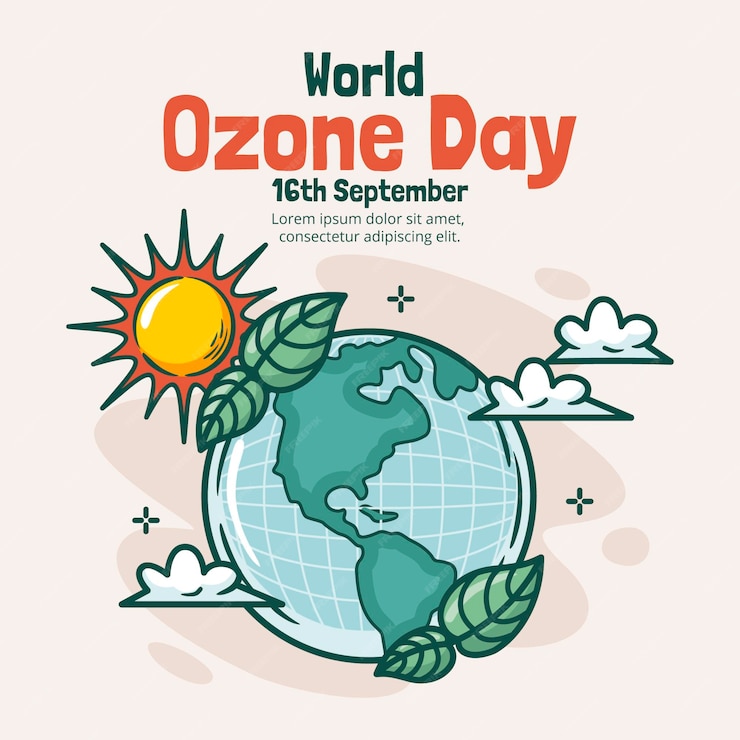As the sun's radiant rays pierce through Earth's atmosphere, a silent guardian stands firm, shielding us from the harmful effects of ultraviolet (UV) radiation—the ozone layer. World Ozone Day is an occasion to celebrate this protective shield, understand its significance, and renew our commitment to its preservation.
Understanding Ozone and Its Importance
The ozone layer, located in the Earth's stratosphere, is composed of ozone molecules (O3) that play a vital role in filtering out harmful UV radiation. This natural shield is essential for safeguarding human health, protecting ecosystems, and regulating our climate.
Origins of World Ozone Day
World Ozone Day has its roots in the Montreal Protocol on Substances that Deplete the Ozone Layer, signed on September 16, 1987. Recognized by the United Nations, this day serves as a reminder of global cooperation to address ozone layer depletion.
The Theme for World Ozone Day 2023
This year's theme, "Preserving Our Ozone Layer: Our Shared Responsibility," underscores the collective effort required to protect the ozone layer. It focuses on raising awareness about the importance of ozone protection and the role of individuals, communities, and nations in this vital mission.
Ozone Layer's Vital Role
The ozone layer acts as Earth's sunscreen, blocking harmful UV-B and UV-C rays from reaching the surface. Without it, increased UV exposure would lead to a surge in skin cancers, cataracts, and other health issues, while also causing harm to ecosystems and contributing to climate change.
Ongoing Threats to the Ozone Layer
Despite significant progress, the ozone layer still faces threats. Ozone layer depletion, primarily driven by human activities, remains a concern. The excessive release of ozone-depleting substances, such as chlorofluorocarbons (CFCs), continues to pose a threat to this fragile shield.
Causes of Ozone Depletion
The primary culprits behind ozone layer depletion are human-made substances, including CFCs, halons, and methyl chloroform. These compounds release chlorine and bromine atoms when they reach the stratosphere, which then catalyze the breakdown of ozone molecules.
Impacts of Ozone Depletion
The consequences of ozone layer depletion are far-reaching. Increased UV exposure can lead to skin cancer, cataracts, and other health issues in humans. It also harms marine ecosystems, affects crop yields, and contributes to global warming.
International Efforts
The international community has taken significant steps to protect the ozone layer. The Montreal Protocol, a landmark treaty, has successfully phased out the production and consumption of many ozone-depleting substances, leading to gradual recovery of the ozone layer.
Protecting the Ozone Layer
Preserving the ozone layer requires continued efforts. Advancements in technology and policy changes play a crucial role in minimizing ozone depletion. International collaboration and research are essential to finding alternatives to ozone-depleting substances.
Individual Actions
While international efforts are vital, individuals can also contribute to ozone protection. Simple actions like using eco-friendly products, conserving energy, and spreading awareness can make a significant difference in reducing our collective impact on the ozone layer.
FAQs
Q: How does the ozone layer protect us?
A: The ozone layer filters out harmful UV radiation, preventing it from reaching the Earth's surface and safeguarding human health and ecosystems.
Q: What is the Montreal Protocol?
A: The Montreal Protocol is an international treaty aimed at phasing out the production and consumption of ozone-depleting substances to protect the ozone layer.
Q: What are some ozone-depleting substances?
A: Ozone-depleting substances include chlorofluorocarbons (CFCs), halons, and methyl chloroform, among others.
Q: How can individuals contribute to ozone protection?
A: Individuals can take action by using eco-friendly products, conserving energy, and raising awareness about ozone protection.
Q: Are there visible signs of ozone layer recovery?
A: Yes, there are signs of recovery, including a reduction in the size of the ozone hole over Antarctica. However, full recovery will take several decades.



